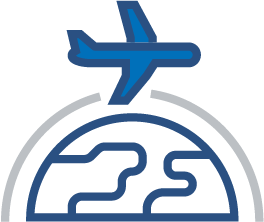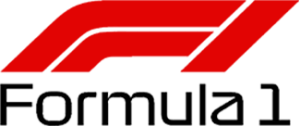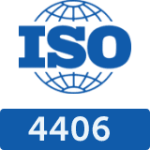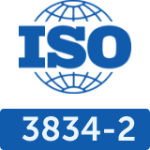
More warehouse storage at DHL Arendal with KOOI® double-deep forks
..how KOOI-REACHFORKS® transformed a Swedish warehousing operation.

When the ASG company was reorganising its 22,000 square metre warehouse in Arendal near Gothenburg in 1998, factors such as improved space utilisation and greater operational efficiency were high on the agenda. Nowadays, the warehouse is run by DHL, the worldwide logistical group, who handle up to 1,500 pallets each day at the revamped premises. At the planning stage, and following consultation with lift truck suppliers Jungheinrich, one item of equipment was included which proved particularly invaluable when the warehouse went operational: this was the hydraulically-operated attachment manufactured by Meijer Handling Solutions in the Netherlands: the KOOI-REACHFORKS®.
Long, fixed forks were, in fact, considered as an alternative, at least on paper, but they were not considered to be suitable because of the risk of damaging goods. “With telescopic forks, we could construct a much more efficient pallet system,” warehouse manager Lars Jarlros told Handling Network magazine.
A large proportion of the imported goods of the convenience goods group ICA arrives at DHL’s warehouse in Arendal. ICA Sverige AB is Sweden’s largest grocery chain, with seven warehouses throughout the country. Every day, some 20 containers are unloaded at Arendal, involving between 1,000 and 1,500 pallets. The warehouse also functions as a groupage terminal for onward transport out to ICA’s various regional warehouses.
KOOI-REACHFORKS
DHL Arendal has been a customer of Jungheinrich for a long time. In the Arendal warehouse, there is a total of eight trucks, of which one is a counterbalance truck, and the remainder are reach trucks. It was Jungheinrich who suggested to DHL that they should look at the KOOI-REACHFORKS system when the time came to reconstruct the warehouse. Now, all the lift trucks in the warehouse are fitted with KOOI-REACHFORKS.
Four pallets per trip
“Before the warehouse was reconstructed, with the intention of obtaining as much pallet space as possible, a financial analysis was made. This showed, among other things, that investment in hydraulic forks was good business,” says Lars Jarlros who, after several years of experience with the forks is delighted to confirm how useful they are. “With telescopic forks, the trucks can now take a maximum of four pallets as opposed to two previously. And apart from the fact that the pallet system could be utilised more efficiently as a double-deep racking system, it also became evident, when the new system was trimmed in, that the incidence of damage was less.“
Low maintenance costs
Jungheinrich also looks after maintenance of the hydraulic forks, and DHL can happily confirm that the maintenance costs are very modest. “Yes, there’s not much money in the aftermarket business,” says Sven-Inge Åström from the Swedish supplier’s representative, RODAB, regretfully, with a twinkle in his eye. “Actually, I’m only responsible for sales, nevertheless because of the high quality of KOOI-REACHFORKS the aftermarket queries are so limited that I also manage to keep up with all the technical questions that occur.”
Sven-Inge Åström says that RODAB is certainly not alone as regards the supply of telescopic forks in Sweden, but considers, nevertheless, that they are market leaders. “Despite the fact that telescopic forks have been around for 20 years in Sweden, there is a big market left to work”, says Sven-Inge Åström, who divides the unworked market into two categories: “Firstly,” he says, “there are logistical companies, bigger than you think, that do not know about the concept of telescopic forks. And then there’s another category: those that have perhaps heard about them, but still do not know how useful they are.”





























































